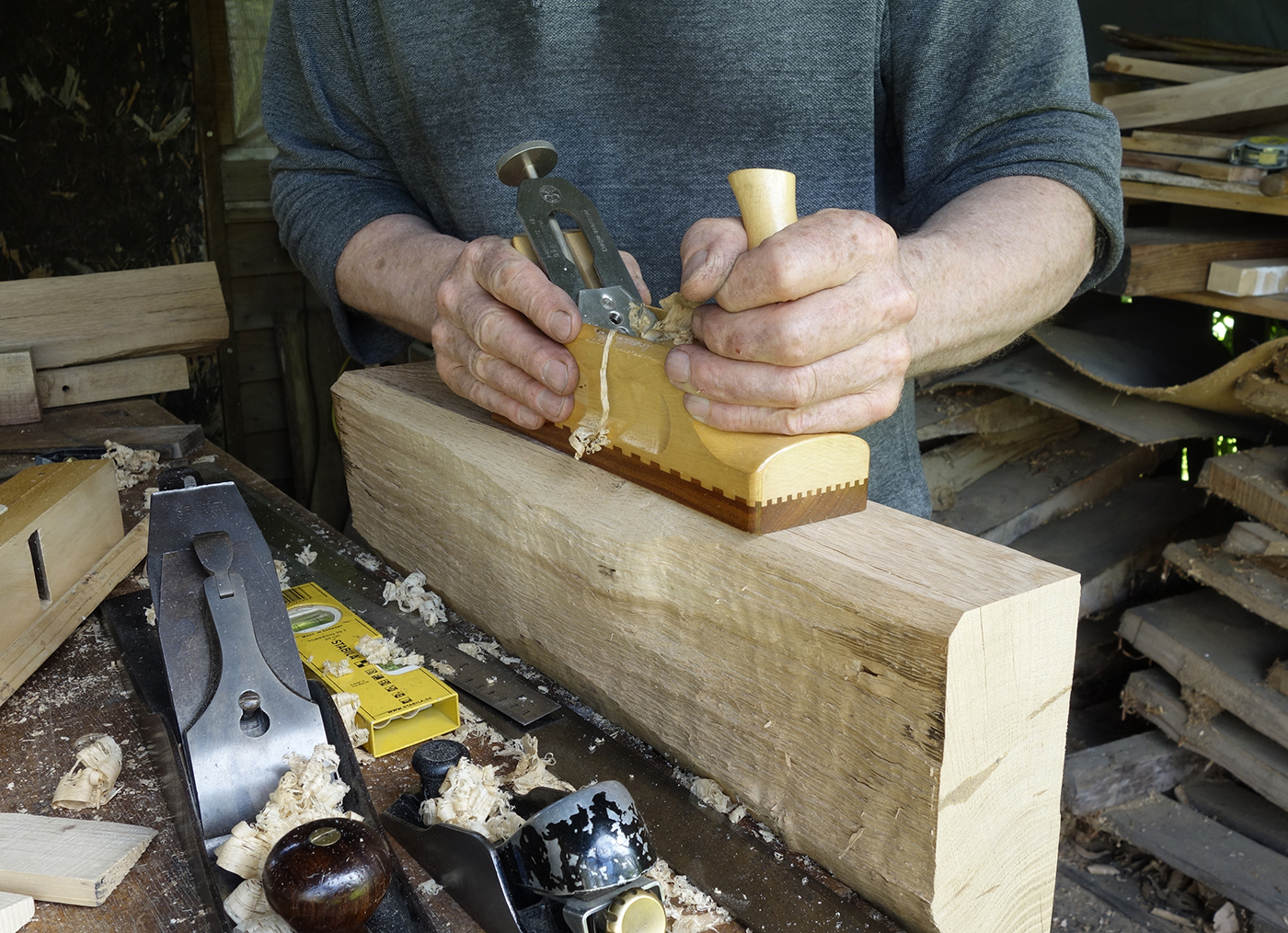Adrian McCurdy has worked with wood since an early age. With a background in Fine Art, Adrian’s career moved from painting to a development of unique wood-skills in furniture and, more recently, carved panels. Immersed is an exhibition including both his furniture and wall panels which explore and celebrate their natural material and sculptural qualities. Each work is treated as a sculptural exercise and his wall panels are an extension of his practice which reflect the natural world and landscape around him.
From his workshop in the Scottish Borders, Adrian produces furniture using quality local timber and craft techniques both long established and contemporary, often working with storm damaged wood felled by local saw-mills.



Adrian McCurdyIn most cases I use wood from trees that have come to the end of their life. When a suitable log catches my eye, I have it cut to length and delivered to my work place. Not shopping for ‘planked-timber’ means I can be resourceful with nail-impregnated hedge-trees or the occasional lightening struck park-tree. Storm damage is the norm as large trees become more susceptible to losing major limbs. Bigger trees offer greater possibilities and surprisingly, are less wasteful than smaller trees.
Watch our short film below for a glimpse into Adrian’s studio
‘I approached the concept of what furniture I could make using the simplest of tools upon a log of oak.’
Over time, the individual shapes released by splitting the wood, along with the natural grain-textures of riven wood have become Adrian’s passion. It’s a beauty dominated by the raw material and simple craft techniques.
Hand tool practice is essential. Each piece of wood becomes loved for its individuality. The planning begins by a selection of seasoned components from Adrian’s riven wood in storage. Design decisions then continue ‘throughout the making’ process that might extend from a week to months. It can often be many years between finding a log to finishing a piece.


I wanted to achieve something new and creative despite the long history of simple oak furniture. So the process had to be ambitious and mindful of the possibilities. The largest logs seemed to offer most options coupled with the special quality of quartered timber.


Nisbet Riven Chests
A massive damaged oak was felled on the outskirts of Adrian’s village in 2015. Naturally, he lodged interest with Lothian Estates and had the ‘butt’ delivered in three lengths. The quality of grain and inner growth suited his way of working and inspired new ideas.
Adrian says: ‘It’s been satisfying how patience and opportunity have provided me with beautiful wood from my Borders locality.’


Wedged Chair
Adrian’s intention with the Wedged Chair was to make a seat that was reliant on using wedges as the only joining element. These three oak components (that make up most of the chair) were split from the same tree. These components are complimented with the wedge details and arm rests made of sycamore. It’s sculptural and minimal, but still shapely and robust.
‘The wedge profiles used here help for good sitting posture and joint strength where necessary. Keep wedges firmly tapped in.’
– Adrian McCurdy, 2021I like to treat each piece as a sculptural exercise with the permutations seemingly endless as to what to use and how it might best combine with other components. Leg shapes combined with top or seat is an obvious case. The shapes collected (over many years) set the boundary of possibilities.
The Wavy Seats
‘Timber was sourced by a friendly woodcutter of notorious character called Jake Oliver near the Borders village of Eccles. The butt was lying flat when I arrived and I was left to manage as I pleased. I continued halving the oak with a wedge and mallet until suitable furniture sizes were achieved. Working around the centre-rot has produced some surprisingly attractive shapes for short benches.’
Riven Shaped Dipper Seat
An internal tree knot was responsible for the unusual shaping of this Dipper Seat, as the wood grew around the knot. Although uncommon, when splitting large logs, one has to accommodate unexpected deviations of inner tree growth and consider it a characteristic feature/make it part of the design.
Sycamore Bowls
Adrian had initially put aside this sycamore to make rippled grain ‘fiddlebacks’ (a specific style of splat-backed chair). The bowls are carved and sanded and the pebbles are lathe turned ellipses, finished with hard wax-oil.
Oak Bowl
The oak bowl was a two-piece construction that is hand carved with lathe turned pebbles. The rougher areas are remnants of the wood texture from cleaving. Finished with hard wax-oil.
Tall Cleft Chair
‘This high backed chair is probably the closest homage I’ve paid to Mackintosh or Tim Stead. It’s my own one-off design construction and works well with the reliable strength of cleft oak and my practised art of the wedged joint.’
Carved Panels
When finding inspiration for his carved panels, Adrian shifted his viewpoint. Instead of looking at landscape from a distance, he focussed on what is close by. By looking at small isolated stretches, the landscape can become abstracted and more like a still life. Throwing stones into a local pond progressed to using props, creating chalk drawings and making card models to photograph.
These photographic recordings were scaled and mapped out onto wood panels that are then carved, experimenting with patterns and ambiguities in rippled water.
A panel might begin with a simple sketch and a card model, but shaping the contours is achieved meticulously by a gradual removal of waste wood. Machines are used only for roughing out the design. Final shaping is done by hand-tools and eventually sanded to a smooth finish… only then does the grain begin to show clearly.
Beach House/Holy Island
Adrian was inspired by a beach house that was carefully constructed with pebbles and driftwood. He created these ‘windows’ looking from inside out to the sea horizon. The process was time consuming as he ‘bricked’ together oak with raw riven textures to frame the view looking out.















